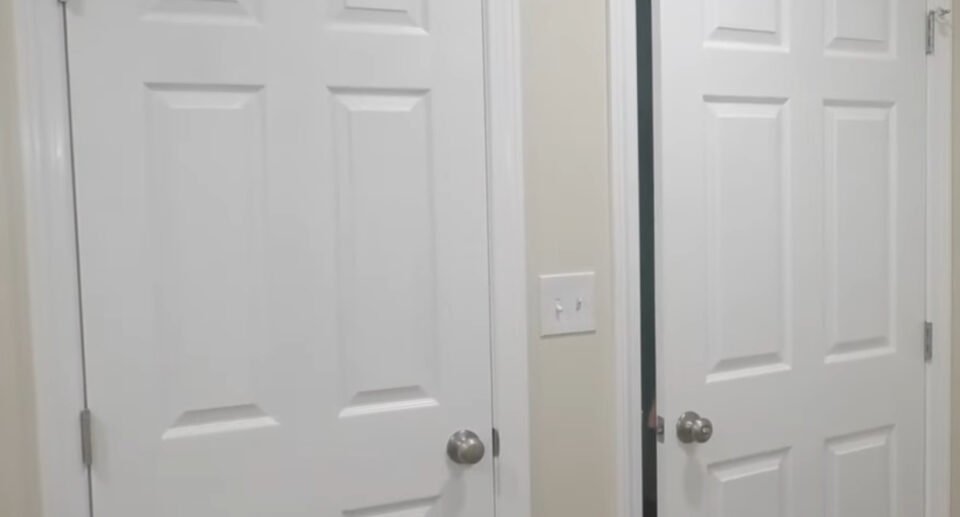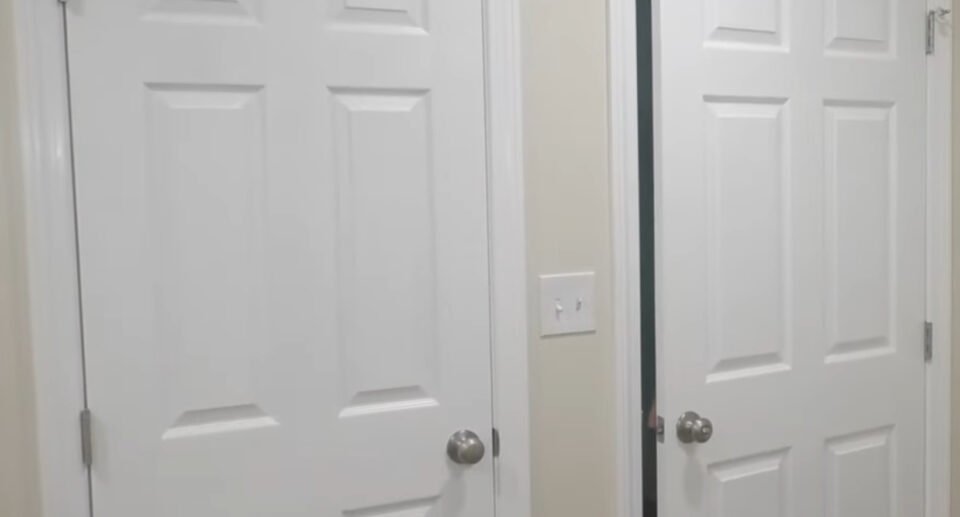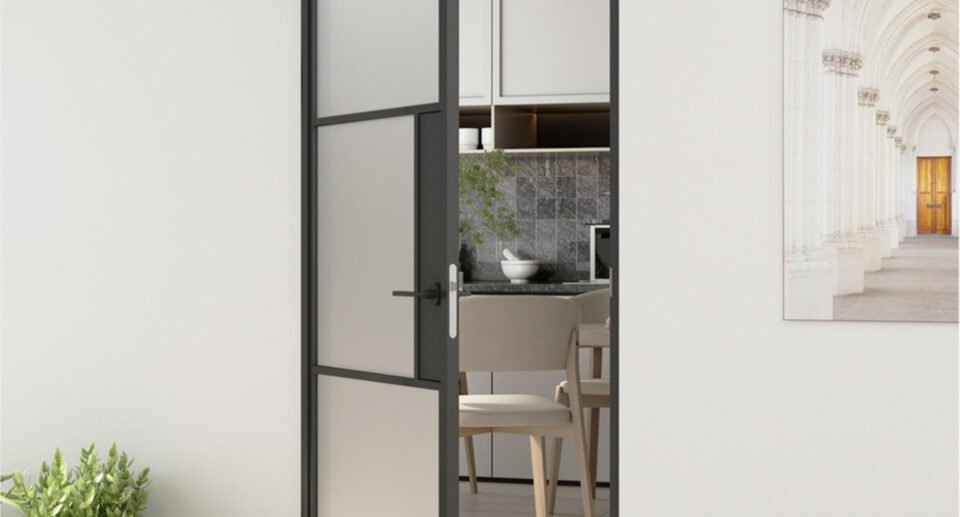What is a Left Hand Door? A Clear Answer With Video

A left hand door is a type of door that is hinged on the left side and swings inward when opened. This means that the handle or knob is located on the right side of the door when viewed from the outside.
Left hand doors are commonly used in residential and commercial buildings, and are an important consideration when selecting and installing doors.
Door handing is the term used to describe the way a door swings open. It is important to determine the handing of a door before installation to ensure that the door will open and close properly.
Right hand doors are hinged on the right side and swing inward when opened, with the handle or knob located on the left side when viewed from the outside.
Left hand doors, as previously mentioned, are hinged on the left side and swing inward when opened, with the handle or knob located on the right side when viewed from the outside.
When selecting a door, it is important to consider the handing to ensure that the door will function properly and meet building codes. This is especially important in commercial buildings, where doors are subject to heavy use and must meet safety requirements.
Understanding the difference between left hand and right hand doors, and how to determine the handing of a door, is essential for anyone involved in the installation or maintenance of doors.
Understanding Door Handing
Door Swing Direction
The first step in understanding door handing is to determine the direction in which the door swings. This is important because it will help you identify whether you need a left-handed or right-handed door.
To determine the swing of the door, stand on the side where the door opens towards you. If the door swings towards you, it is an inswing door. If it swings away from you, it is an outswing door.
Left Hand vs. Right Hand Doors
Once you have determined the swing of the door, the next step is to identify whether it is a left-handed or right-handed door.
If the hinges are on the left side of the door and it swings towards you, it is a left-handed door. On the other hand, if the hinges are on the right side of the door and it swings towards you, it is a right-handed door.
How to Determine Door Handing
To determine the handing of a door, you can use a door handing chart. These charts are available online and can help you identify whether you need a left-handed or right-handed door.
Another way to determine the handing of a door is to stand on the side where the door swings towards you. If your left hand is closest to the doorknob, it is a left-handed door. If your right hand is closest to the doorknob, it is a right-handed door.
The handing of the door can affect the installation of door hardware. For example, if you install a left-handed door knob on a right-handed door, it will not function properly. Therefore, it is important to determine the handing of the door before installing any hardware.
Installation and Hardware Considerations
Installing Hinges and Hardware
When installing a left-hand door, it is important to pay attention to the placement of the hinges. The hinges should be installed on the left side of the door when viewed from the outside, so that the door swings into the room towards the right.
It is also important to ensure that the hinges are properly aligned and securely attached to both the door and the frame.
In addition to the hinges, other hardware such as door handles, locks, and latches should also be installed on the left side of the door. This will ensure that the door can be easily opened and closed using the left hand.
Choosing the Right Hardware for Your Door
When choosing hardware for a left-hand door, there are a few key factors to consider.
Firstly, it is important to choose hardware that is designed specifically for left-hand doors. This will ensure that the hardware is compatible with the door and will function properly.
Another important consideration is the type of hardware to use. For example, lever handles are a popular choice for left-hand doors, as they can be easily operated using the left hand.
Swinging door hinges are also a good choice, as they allow the door to swing freely in both directions.
Finally, make sure to choose hardware that is durable and of high quality. This will ensure that the hardware will last for many years and will function properly over time.
Safety and Security Aspects
The Role of Door Swing in Safety
The direction in which a door swings can have a significant impact on the safety of those using it.
Left hand doors, which swing inward, are generally considered safer than right hand doors that swing outward. This is because inward swinging doors are less likely to be caught by the wind, which can cause them to slam shut and potentially injure someone.
In addition, left hand doors that swing inward can provide a clear path of exit in case of an emergency. This can be especially important in situations where quick evacuation is necessary, such as in a fire or other disaster.
Security Features for Left Hand Doors
When it comes to security, left hand doors can be just as secure as right hand doors.
In fact, many left hand doors are designed with added security features to ensure that they are as secure as possible.
One of the key security features of left hand doors is the placement of the hinges. Because left hand doors swing inward, the hinges are located on the inside of the door, making them less accessible to potential intruders.
In addition, many left hand doors come with reinforced frames and locking mechanisms to provide added security.
While left hand doors can be just as secure as right hand doors, it is still important to take additional security measures to ensure the safety of your home or business.
This can include installing a deadbolt or security system, as well as ensuring that all windows and other entry points are properly secured.
Compliance with Building Codes
When installing doors, building codes and regulations must be followed to ensure safety and accessibility. This includes determining whether a door is left-handed or right-handed.
Navigating Regulations and Codes
Building codes and regulations vary by location, but they generally require doors to be installed in a way that allows for easy and safe access.
This means that doors must swing in the direction of egress and should not obstruct walkways or other areas.
In terms of determining door handing, the International Building Code (IBC) provides guidance on the subject.
According to the IBC, the handing of a door should be determined from the outside of the building or room. If the hinges are on the left-hand side of the door when viewed from the outside, the door is left-handed. If the hinges are on the right-hand side, the door is right-handed.
Building codes and regulations may also dictate the minimum width and height of doors, as well as the type of hardware that must be used.
These requirements can vary depending on the intended use of the door and the location in which it is installed.
Double Doors and Special Cases
Determining the handing of a double door can be more complex than a single door. In this case, the handing of each door must be determined separately.
The active door, or the one that is used most frequently, is typically the one that determines the handing.
There are also special cases where a door may need to swing in a particular direction for functional or preference reasons.
For example, a left-handed person may prefer a left-handed door, or a door in a particular location may need to swing in a specific direction to avoid obstructions. In these cases, it is important to consult with a professional to ensure that building codes and regulations are still being followed.
Conclusion
In conclusion, left hand doors are simply the opposite of right hand doors. They are identified by the location of their hinges when facing the door from outside. If the hinges are on the left side, the door is left-handed and will open inward to the left.
It is important to understand the difference between left and right hand doors, especially for those involved in construction or renovations. Ordering the wrong type of door can result in costly mistakes and delays.
When ordering doors, it is recommended to order them in person and draw a picture from above to show the door hinge and swing. This can help avoid confusion, especially when ordering over the phone.
Overall, knowing the difference between left and right hand doors is a useful piece of information that can save time and money in the long run.

Hello, I’m Keith Jones. I’m the author and head of content here of door and window guide. I’ve been in the window and door industry for over 10 years in the UK and North America. I’ve had quite a few roles during my career mainly in Worldwide sales. I’m now semi retired so I thought I’d put my knowledge to good use educating people about all they might need to know about door and window related topics.






